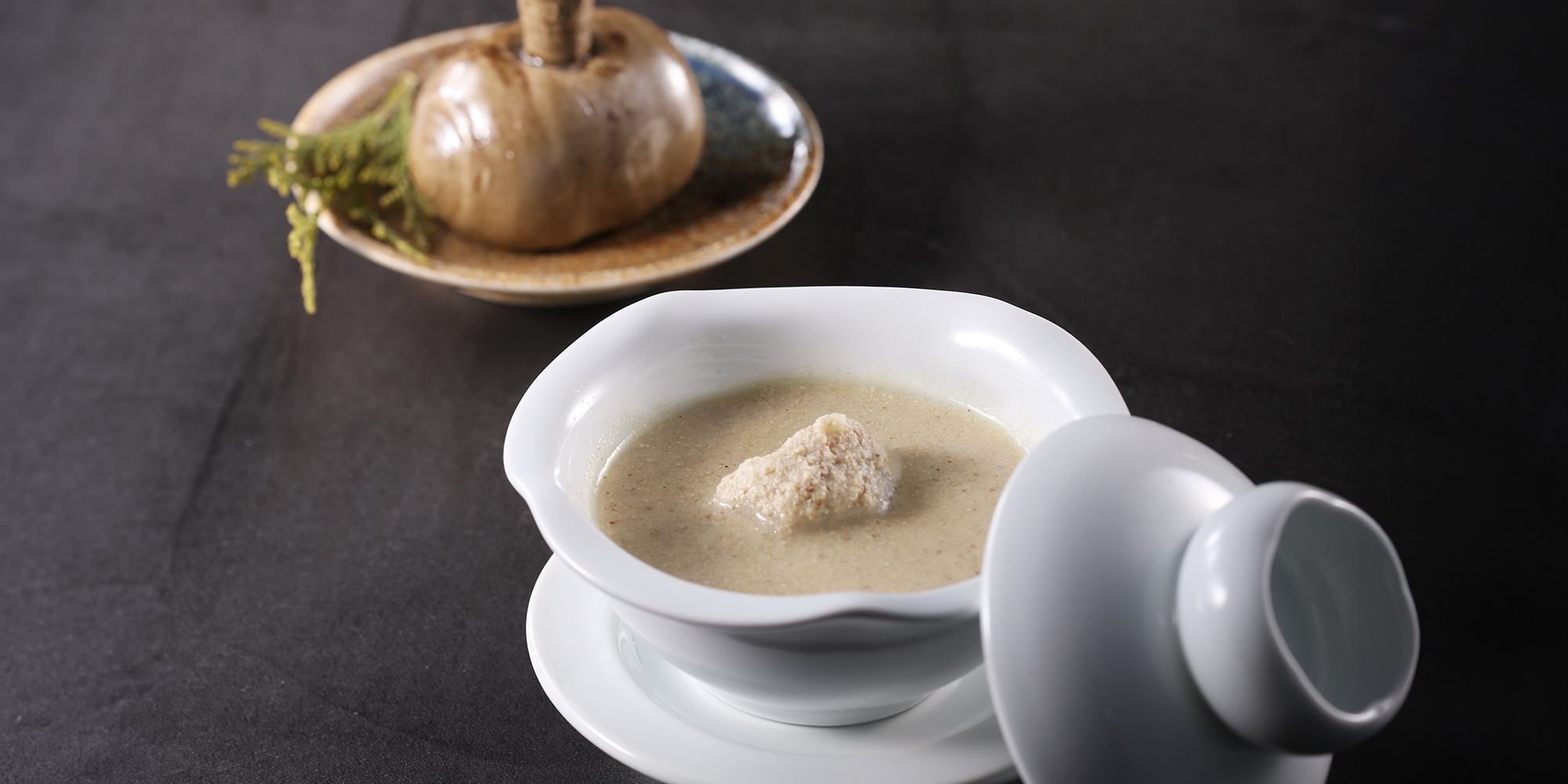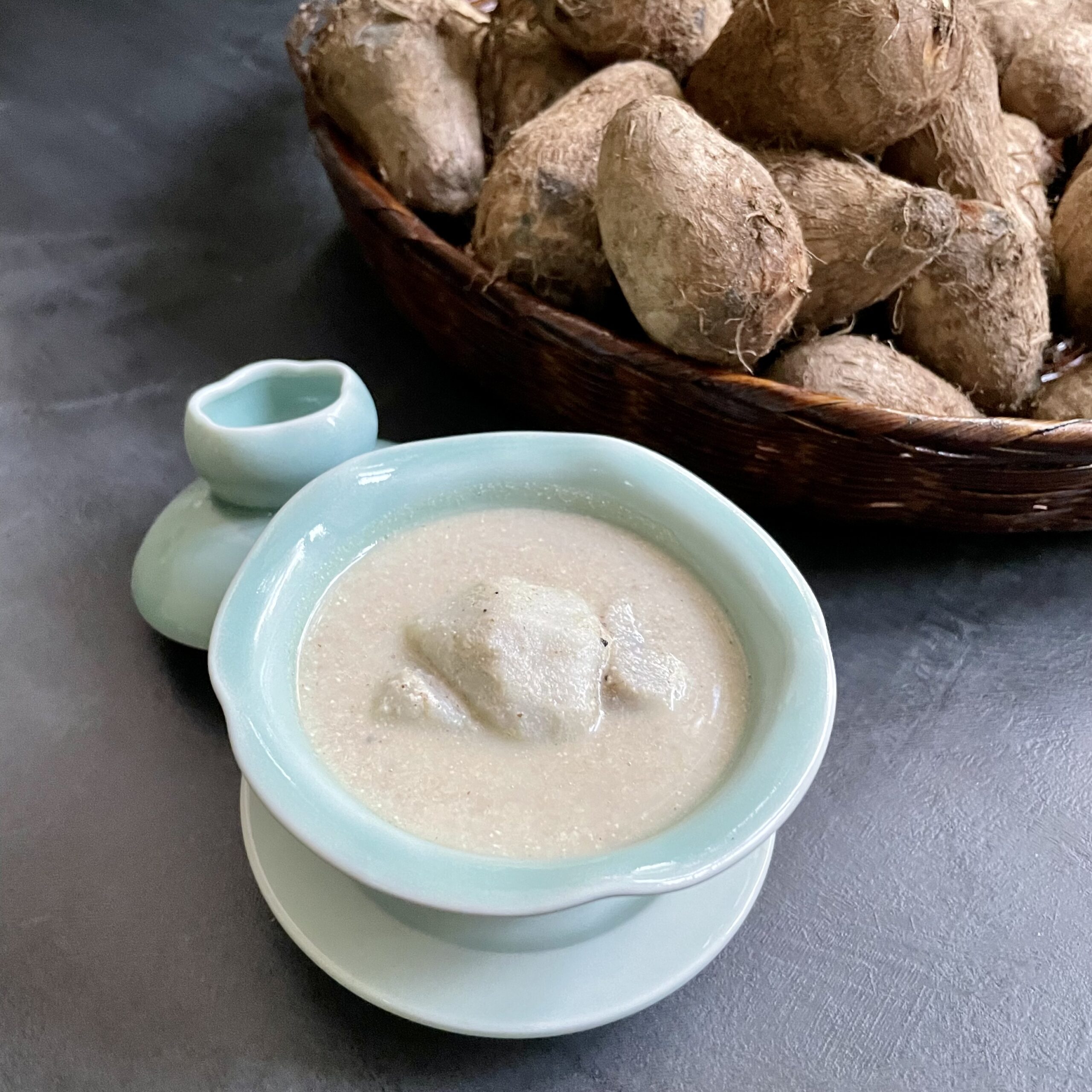The second seasonal dish prepared by Haenam Cheonilgwan
The second seasonal dish prepared by Haenam Cheonilgwan

Taro
begins to appear from Chuseok and is called taro because it is an egg in the soil. Taro soup is a traditional Korean food and moreover considered one of the important dishes during Chuseok holidays.
Based on the phrase of “NongGaWolryeongga” written by Jeong Hak-yu during the reign of King Heonjong of the Joseon Dynasty, it is presumed that taro soup was settled as a Buddhist temple during the Joseon Dynasty.
Taro contains nutrients such as sugar, phosphorus, salt, and calcium, and is rich in fiber, which helps digestion and prevents constipation.
Taro
begins to appear from Chuseok and is called taro because it is an egg in the soil. Taro soup is a traditional Korean food and moreover considered one of the important dishes during Chuseok holidays.
Based on the phrase of “NongGaWolryeongga” written by Jeong Hak-yu during the reign of King Heonjong of the Joseon Dynasty, it is presumed that taro soup was settled as a Buddhist temple during the Joseon Dynasty.
Taro contains nutrients such as sugar, phosphorus, salt, and calcium, and is rich in fiber, which helps digestion and prevents constipation.



To help you get through the autumn months, Haenam Cheoneilgwan puts together a list of some of the best autumn foods for a autumn specialty.
All rights reserved@ 2023 Haenam Cheonilgwan
All rights reserved@ 2023 Haenam Cheonilgwan